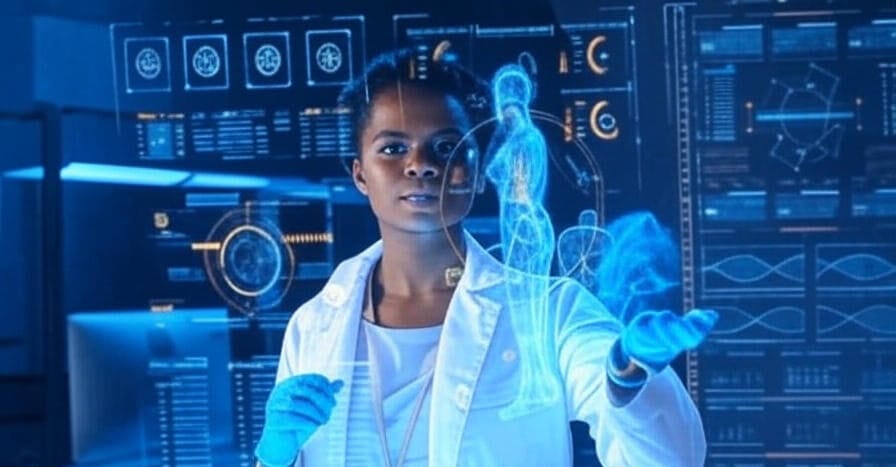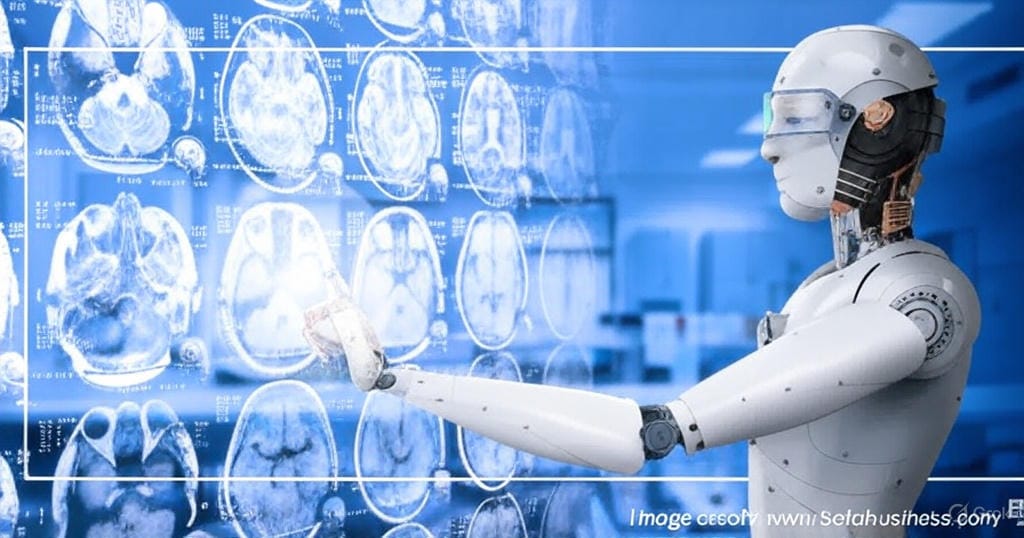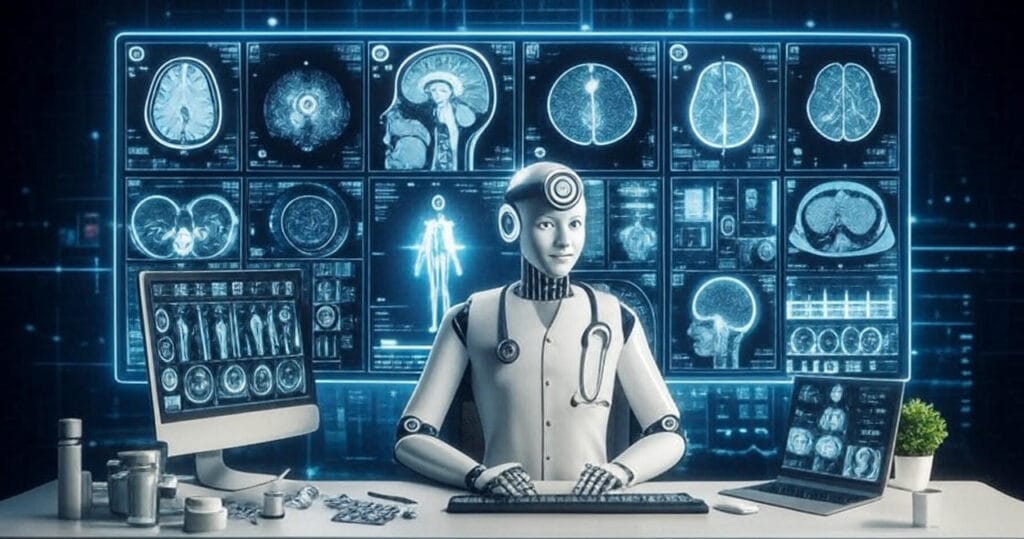
Published on July 20, 2025
In a major breakthrough for medical imaging, scientists have developed an AI tool that can create detailed 3D images of bones using only two to four X–ray pictures.Reported on July 18, 2025, this innovation slashes radiation exposure by up to 99% compared to traditional computed tomography (CT) scans, promising to transform diagnostic practices by enhancing efficiency, reducing patient risk, and improving access to advanced imaging. This development marks a significant leap forward in the integration of artificial intelligence into healthcare, with far-reaching implications for patient care and medical workflows.
A Game-Changer in Medical Imaging

Traditional CT scans, while effective for creating detailed 3D images of bones and tissues, require hundreds of X-ray projections, exposing patients to significant radiation doses. This can be particularly concerning for individuals requiring frequent imaging, such as those with chronic conditions or pediatric patients, where cumulative radiation exposure poses long-term health risks. The new AI technology addresses this challenge by leveraging advanced machine learning algorithms to generate high-quality 3D reconstructions from a minimal number of X-ray images—typically two to four—dramatically reducing radiation exposure.
The technology works by training deep learning models on vast datasets of existing medical imaging records. These models learn to interpret the limited data from a few X-ray angles and extrapolate accurate 3D bone structures, effectively “filling in the gaps” that would typically require additional scans. According to the research team, the AI’s reconstructions are comparable in quality to those produced by CT scans, offering precise details of bone density, fractures, and structural anomalies while minimizing patient risk.
Key Benefits for Patients and Clinicians
The implications of this breakthrough are profound. By reducing radiation exposure by up to 99%, the technology enhances patient safety, particularly for vulnerable populations such as children, pregnant women, and those undergoing repeated diagnostic procedures. This reduction also alleviates concerns about radiation-related risks, such as increased cancer probability over time, making imaging a safer option for routine and emergency diagnostics.
For clinicians, the technology promises faster diagnostic workflows. Traditional CT scans can be time-consuming, requiring patients to remain still for extended periods while multiple images are captured. In contrast, the AI-powered approach streamlines the process by relying on fewer images, potentially reducing scan times and enabling quicker diagnoses. This is particularly critical in emergency settings, where rapid assessment of bone injuries, such as fractures or dislocations, can significantly impact treatment outcomes.
Moreover, the technology has the potential to improve access to advanced imaging in resource-constrained settings. CT scanners are expensive and not universally available, particularly in rural or underserved regions. By enabling high-quality 3D reconstructions from standard X-ray machines, which are more widely available and cost-effective, this innovation could democratize access to cutting-edge diagnostics, bridging gaps in global healthcare equity.
Technical Innovations Behind the Breakthrough

The development of this AI technology builds on advancements in deep learning, particularly in the field of generative modeling. The system employs convolutional neural networks (CNNs) and generative adversarial networks (GANs) to analyze X-ray images and predict 3D structures. These models are trained on extensive datasets comprising thousands of paired X-ray and CT images, allowing the AI to learn complex patterns and relationships between 2D projections and their corresponding 3D structures.
A key challenge in developing this technology was ensuring the accuracy of reconstructions from limited data. The research team addressed this by incorporating advanced regularization techniques and physics-informed constraints, ensuring that the AI’s outputs align with anatomical realities. The result is a system that not only produces high-fidelity images but also maintains robustness across diverse patient populations and imaging conditions.
Industry and Clinical Implications
This new technology is set to change the medical imaging industry.
Major imaging equipment manufacturers, such as Siemens Healthineers and GE Healthcare, are likely to explore integrations of this AI into their existing X-ray systems, potentially retrofitting older machines to offer 3D reconstruction capabilities. This could extend the lifespan of current equipment and reduce the need for costly CT scanner installations in many facilities.
Hospitals and clinics stand to benefit from reduced operational costs and improved patient throughput. By minimizing the reliance on CT scans, healthcare providers can allocate resources more efficiently, reserving CT imaging for cases where soft tissue or organ visualization is necessary. Additionally, the technology’s compatibility with portable X-ray devices could enable its use in field hospitals, disaster response units, or mobile clinics, further expanding its impact.
Challenges and Future Directions
While the technology holds immense promise, several challenges remain. Regulatory approval from bodies like the U.S. Food and Drug Administration (FDA) and the European Medicines Agency (EMA) will be critical to ensure the AI’s reconstructions meet clinical standards for accuracy and safety. Additionally, integrating this technology into existing medical workflows will require robust validation across diverse patient demographics and clinical scenarios to ensure reliability.
Looking ahead, researchers are exploring ways to extend the technology beyond bone imaging to include soft tissues and organs, potentially broadening its applications to areas like cardiology or oncology. Collaborative efforts with AI developers and medical institutions are underway to refine the algorithms and expand their clinical utility, with pilot programs already being tested in select hospitals.
A New Era for Healthcare
The development of AI-powered 3D bone reconstruction from minimal X-ray images represents a pivotal moment in medical imaging. By combining cutting-edge artificial intelligence with a patient-centered approach, this technology offers safer, faster, and more accessible diagnostics, paving the way for a new era in healthcare. As it moves toward clinical adoption, it has the potential to redefine standards of care, reduce health disparities, and empower clinicians to deliver better outcomes.
For the medical community and patients alike, this breakthrough underscores the transformative power of AI in healthcare. As research progresses and the technology matures, it is poised to become a cornerstone of modern diagnostics, proving that innovation can simultaneously enhance precision and prioritize patient well-being.
Stay tuned for updates on this groundbreaking technology as it moves from research to real-world impact.






